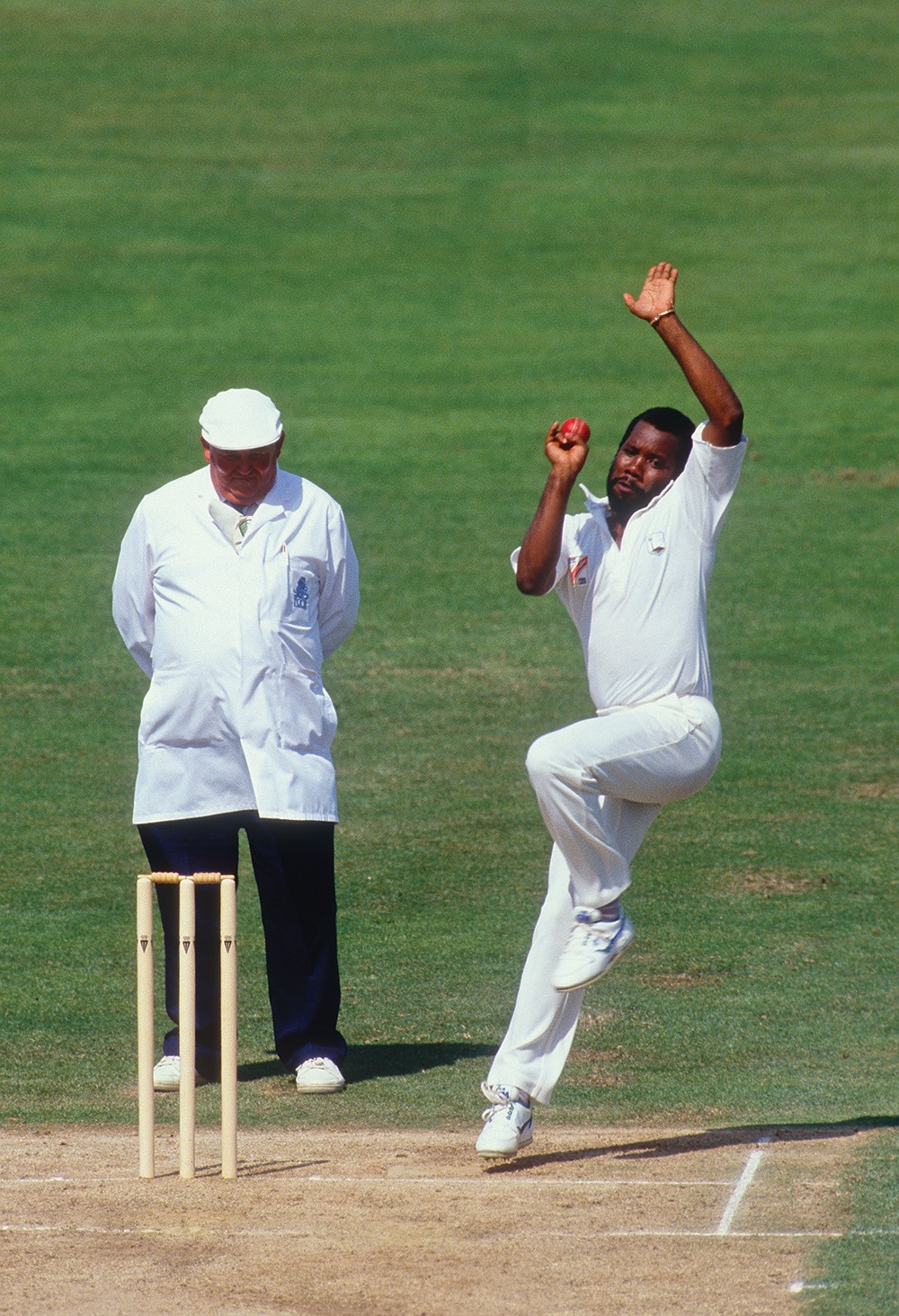Malcolm Marshall – A Fast-Bowling Maestro
A Wicket Taking Machine

Malcolm Marshall is a name synonymous with fast bowling mastery. Marshall was not just a fast bowler; he was a maestro, orchestrating his spells with a blend of pace, precision, and swing that left opponents bewildered. Known for his lethal deliveries and strategic mind, Marshall’s impact on cricket, particularly West Indian cricket, is as profound as it is enduring.
Marshall’s journey to cricketing greatness began in Barbados. Born in Bridgetown, Marshall’s early life was steeped in the vibrant culture of Caribbean cricket. From a young age, he displayed a natural aptitude for the game, with a particular interest in fast bowling. His talent quickly became evident, and by his teenage years, Marshall was already making waves in local cricket circles.
Marshall made his first-class debut for Barbados at the age of 19. His early performances were promising, showcasing his raw pace and ability to swing the ball. It wasn’t long before he caught the attention of the West Indies selectors, leading to his Test debut against India in 1978. Although his initial matches were challenging, Marshall’s determination and relentless work ethic set the stage for his rise to prominence.
Marshall’s Rise to Prominence
The journey to becoming one of cricket’s greatest fast bowlers was not without its struggles. Marshall faced early setbacks, including being overlooked in favor of more experienced bowlers. However, his breakthrough came during the 1980-81 tour of Australia. Marshall’s exceptional performances, including several match-winning spells, marked the beginning of his dominance in international cricket.
One of the key factors behind Marshall’s success was his ability to evolve. He continuously refined his bowling techniques, adding variations that made him unpredictable and difficult to face. His ability to bowl devastating bouncers, coupled with his mastery of swing and seam, made him a formidable opponent in any conditions.
The Art of Fast Bowling
Malcolm Marshall’s bowling style was a blend of sheer pace, precision, and strategic brilliance. Standing at just 5 feet 11 inches, he defied the stereotype of the tall fast bowler. Marshall’s low, skiddy action allowed him to generate extraordinary speed and movement, often surprising batsmen with his sharp bouncers and late swing.
Some of his most memorable spells include his demolition of England in the 1984 series, where he took 7 for 53 at Old Trafford despite a broken thumb, and his consistent performances against top teams like Australia and India. Marshall’s career statistics are a testament to his greatness: 376 Test wickets at an average of 20.94, and 157 ODI wickets at 26.96.
Impact on West Indian Cricket
Marshall was a cornerstone of the West Indies team during their period of dominance in the 1980s. His lethal bowling, combined with the prowess of fellow pacemen like Michael Holding, Joel Garner, and Andy Roberts, created an unstoppable force in world cricket. Marshall’s influence extended beyond his performances; he mentored younger bowlers, instilling in them the values of hard work and dedication.
Marshall’s Influence
Off the field, Malcolm Marshall was known for his humility, sportsmanship, and dedication to the game. After retiring from international cricket, he turned to coaching, where he continued to influence and shape the careers of aspiring fast bowlers. Marshall’s contributions were recognized with numerous awards, including his induction into the ICC Cricket Hall of Fame in 2009.
Modern fast bowlers often cite Malcolm Marshall as a major influence on their careers. His techniques, work ethic, and strategic approach to bowling have become a blueprint for aspiring pacemen.
Malcolm Marshall died in 1999 at the age of 41 from colon cancer. Marshall remains an inspirational figure, symbolizing the pinnacle of fast bowling excellence.


